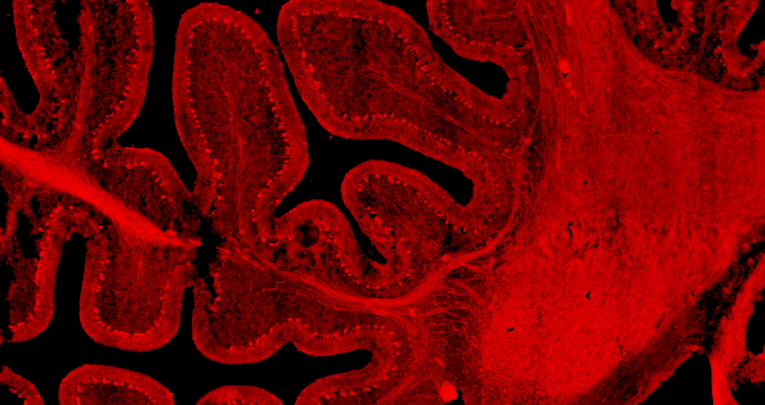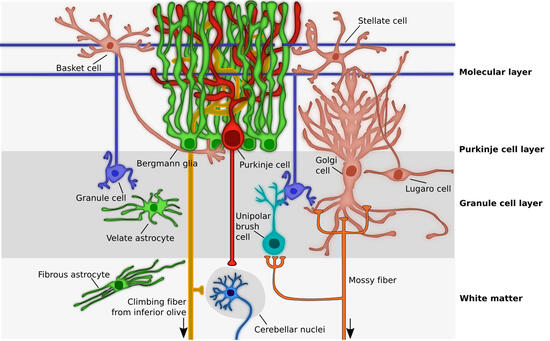
Journal of Clinical Medicine
, 11 March 2020
Review
Cerebellar Astrocytes: Much More Than Passive Bystanders In Ataxia Pathophysiology
Ataxia is a neurodegenerative syndrome, which can emerge as a major element of a disease or represent a symptom of more complex multisystemic disorders. It comprises several forms with a highly variegated etiology, mainly united by motor, balance, and speech impairments and, at the tissue level, by cerebellar atrophy and Purkinje cells degeneration. For this reason, the contribution of astrocytes to this disease has been largely overlooked in the past. Nevertheless, in the last few decades, growing evidences are pointing to cerebellar astrocytes as crucial players not only in the progression but also in the onset of distinct forms of ataxia. Although the current knowledge on this topic is very fragmentary and ataxia type-specific, the present review will attempt to provide a comprehensive view of astrocytes’ involvement across the distinct forms of this pathology.
Here, it will be highlighted how, through consecutive stage-specific mechanisms, astrocytes can lead to non-cell autonomous neurodegeneration and, consequently, to the behavioral impairments typical of this disease. In light of that, treating astrocytes to heal neurons will be discussed as a potential complementary therapeutic approach for ataxic patients, a crucial point provided the absence of conclusive treatments for this disease.
open access
Fig. 1 - In the cortical layers, different astrocyte types interact with distinct neuronal subsets and, therefore, are likely to develop neuron-specific functional properties, similarly important for the correct cerebellar development and functioning. In the innermost layer, the Granule cell layer, excitatory granule cells are surrounded by Golgi and Lugaro cells, two kinds of inhibitory interneurons, as well as by the excitatory unipolar brush cells and velate astrocytes. Here, velate astrocytes are in close relationship with the so-called cerebellar glomeruli, composed of mossy fibers rosettes, Golgi neuron boutons, and granule cells dendrites. The Purkinje cell layers host the cell bodies of Purkinje cells and Bergmann glia, whose dendrites and fibers, respectively, span the whole length of the outermost layer of the cerebellum, the Molecular layer. Here, granule cells’ parallel fibers synapse directly onto Purkinje cells dendrites and have contact points with molecular layer interneurons, called Basket and Stellate cells. Moreover, the processes of Bergmann glia are in tight connection with the whole dendritic tree and soma of Purkinje cells. In the cerebellar white matter, fibrous astrocytes are aligned to axons, while in the deep cerebellum the cerebellar nuclei neurons receive inputs from both Purkinje cells and climbing fibers of inferior olive neurons and project either back to the inferior olive (the GABAergic neurons) or to the brainstem, midbrain, and thalamus (the glutamatergic neurons).
1
Department of Neuroscience Rita Levi-Montalcini, University of Turin, I-10126 Turin, Italy
2
Neuroscience Institute Cavalieri Ottolenghi, Orbassano, I-10043 Turin, Italy








